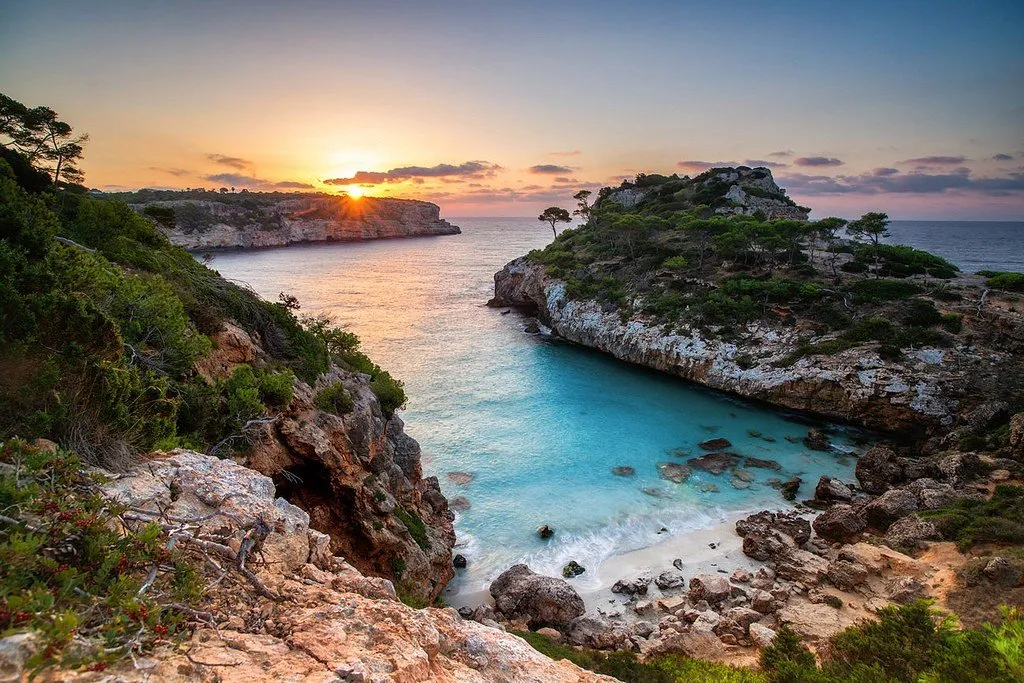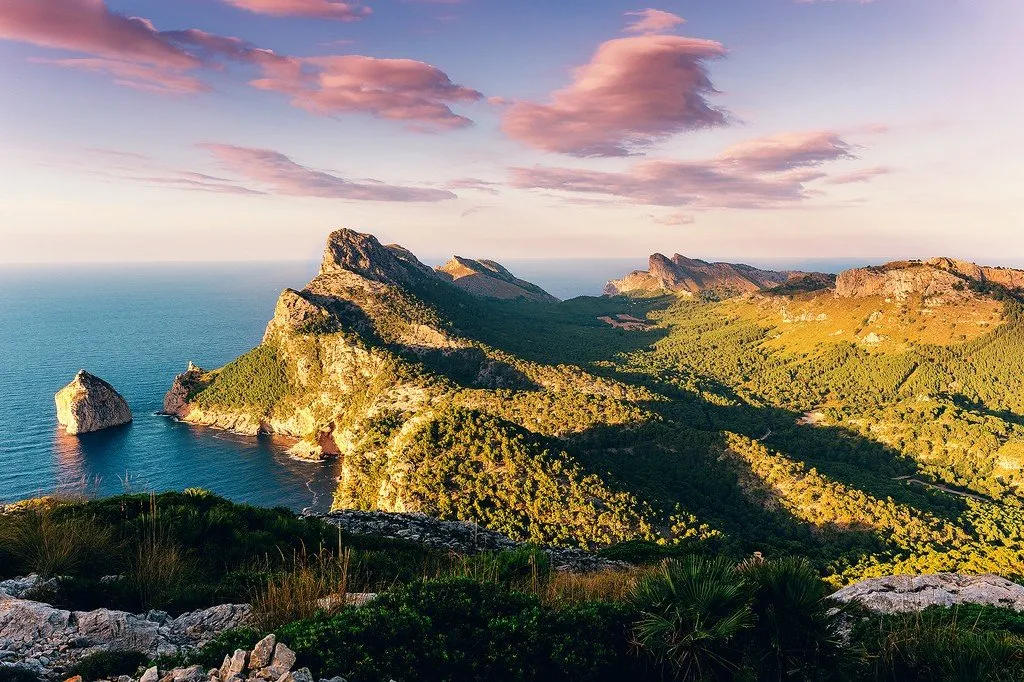The Balearic Islands (Spain) are an archipelago in the Mediterranean Sea and a popular Spanish resort. The islands are like precious stones on the azure sea surface. Mallorca has been attracting tourists since the 1960s, while bohemian Ibiza (Ibiza) resembles a European capital on summer nights. Quiet Menorca is preferred by seasoned tourists, and tiny rocky Formentera has acquired permanent vacationers. The Balearic Islands can be reached by ferry from Barcelona and Valencia, by air from Madrid, Barcelona, Valencia and Alicante, or by charter from any European capital.
 |
| Balearic Islands Spain |
General Information
The Balearic Islands, usually thought of simply as beaches, are of rare beauty and (Majorca in particular)rich history. The history of the islands is connected with Catalonia, and their language is related to Catalan, although they also speak the classic Castilian dialect. These indented shores on the strategically important trade routes of the Mediterranean attracted the Carthaginians, Romans, Vandals, Moors, French and British, their traces were left on the islands. The most developed is the largest of them - Mallorca, which has the richest nature and history. Significant German investments were made here. As a result, residential buildings appeared in the beautiful bays of the east coast, as well as many branches of German banks and real estate agencies. Among the unique historical sights of the island are megaliths, which can be found on other islands.
 |
| Balearic Islands Spain |
From the 50s. the flourishing of crafts began, which is sometimes facilitated by lovers of an unusual lifestyle who come to the island. Yes, in the 60s and 70s. Ibiza became the European capital of the hippies, who gave rise to the corresponding style of pottery and basket weaving: it still thrives here, despite the rise in prices and the popularity of the islands. One of the traditional industries is the production of leather goods, from shoes to bags and belts, which are worth stocking up here.
 |
| Balearic Islands Spain |
Artists have left a major mark, especially in Majorca: for example, the foundations of Juan and Pilar Miro, Miguel Barcelo (a leading contemporary artist born in Felanitx) and Joan March. Military history is reflected in Menorca, and there is an excellent archaeological museum in Ibiza. But most people come here for the sake of the wondrous nature. The mild Mediterranean climate of the Balearic Islands provides wonderful opportunities for hiking and cycling almost all year round. From May to October you can swim, go swimming and other water sports. Sailing races and scuba diving are widespread (primarily in Ibiza). Many are attracted to golf. In July-August, when the peak season comes, the beaches are crowded. Come at another time when there are fewer people.
 |
| Balearic Islands Spain |
How to get there
The large islands of the Balearic Islands have their own airports, with direct flights connecting them with the main European airports. Charters fly from Moscow during the "high season", the rest of the time it's easier to get to Barcelona, from which a regular ferry service is established to the Balearic Islands.
There is air and sea communication between the large islands. The railway is only in Mallorca, and an extensive bus network on each island allows you to get to any point. Boats of various classes ply between the islands of the archipelago. Many rent a car to travel around the islands, the cost of rent depends on the brand of car and route, but in general it is low.
